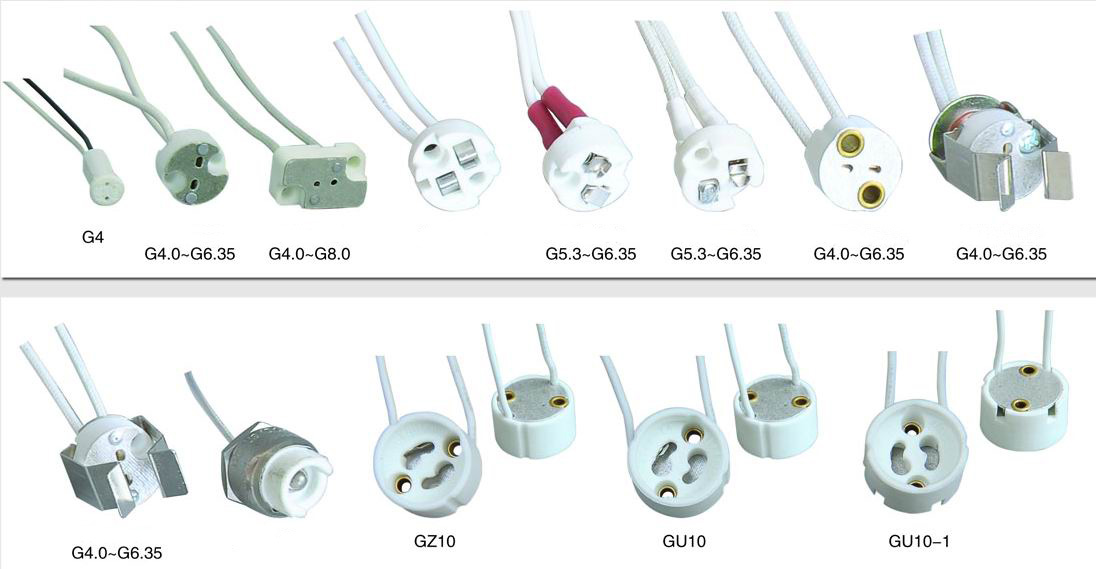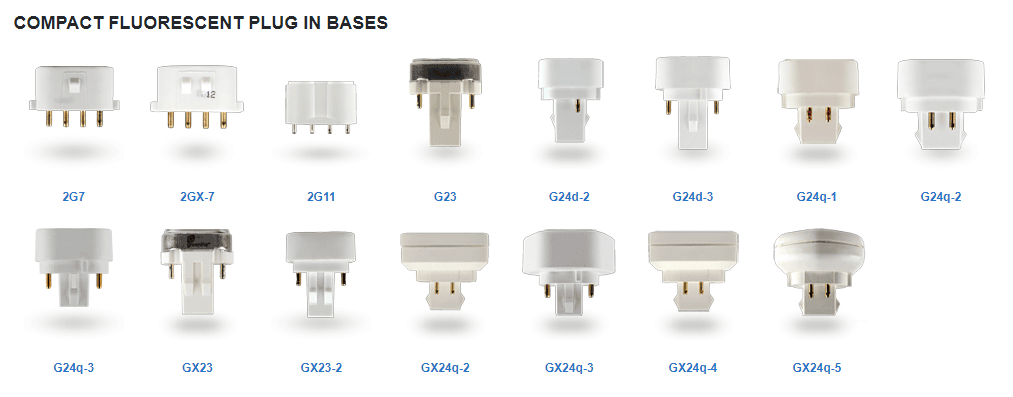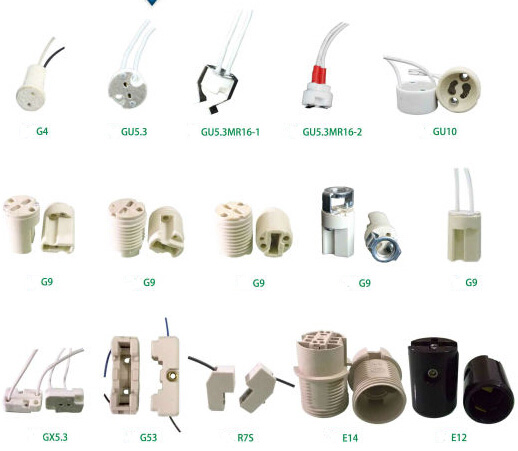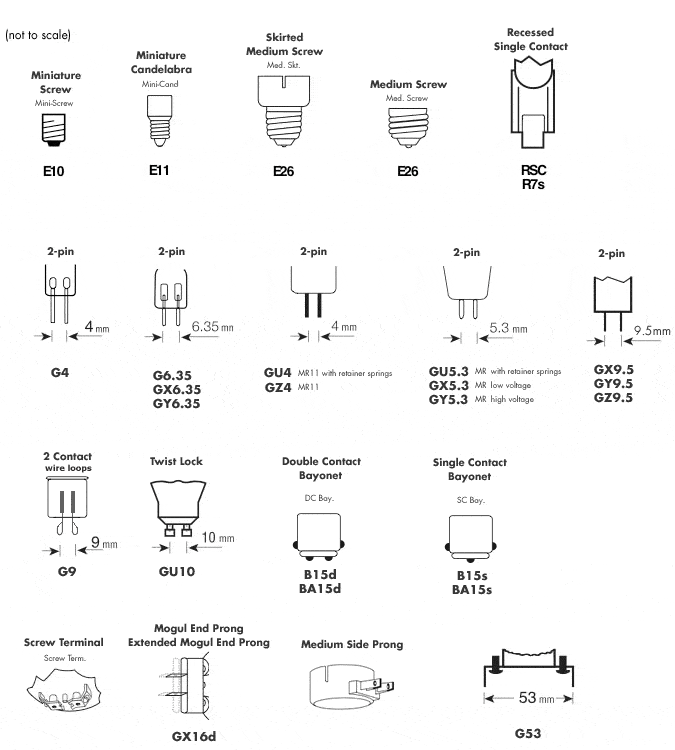Finding the right 2-pin bulb socket can be confusing and lead to poor lighting or bulb failure. Here’s how to find common 2-pin sockets for your lighting needs.
2-pin bulb sockets are often called bi-pin sockets. The most common types of 2-pin sockets are GU10, G4, G5.3, MR16, and G9 for halogen, LED and CFL bulbs.
Let’s explore each of these types of sockets and their uses.

What Are 2-Pin Bulb Sockets?
2-pin bulb sockets, also known as bi-pin sockets, are connectors designed to hold bulbs with two pins extending from their base. These sockets are commonly used in low-voltage lighting applications and are popular in halogen and LED lighting fixtures. The letter “G” in their naming represents the use of pins, and the number refers to the distance in millimeters between the two pins.
These sockets are designed to ensure a secure and steady connection, often found in settings requiring focused, bright lighting such as task lights, under-cabinet lighting, and recessed downlights. The versatility and simplicity of 2-pin sockets have made them a favorite for both residential and commercial lighting systems.
Common Types of 2-Pin Bulb Sockets
G4 Socket
The G4 socket is a small, low-voltage socket commonly used with halogen and LED bulbs. With a 4mm gap between the pins, this socket type is ideal for small lighting fixtures, particularly in decorative and task lighting setups. G4 sockets are typically used in low-voltage systems operating at 12V, making them energy-efficient choices for spaces such as cabinets, accent lighting, and landscape lights.
Despite their small size, G4 sockets provide excellent lighting quality and are widely used in compact spaces where bright, focused light is essential. LED versions of the G4 are particularly popular for their energy efficiency and long lifespan.
G5.3 Socket
The G5.3 socket is another low-voltage bi-pin socket but is slightly larger than the G4, with a 5.3mm spacing between the pins. These sockets are often used in track lighting, recessed ceiling lights, and other task-oriented lighting systems. They are compatible with both halogen and LED bulbs, making them a versatile option for many lighting applications.
G5.3 sockets are designed to deliver consistent light with a focus on energy efficiency. Whether used in commercial environments or home settings, these sockets are known for their adaptability, especially in systems requiring directional lighting such as kitchen or office spaces.

Understanding GU Sockets
GU10 Socket
The GU10 socket is used for high-voltage applications, with pins spaced 10mm apart. These sockets feature a twist-lock mechanism that ensures the bulb remains securely in place. Commonly used with spotlights and downlights, GU10 sockets are compatible with both halogen and LED bulbs.
GU10 sockets are particularly popular in track lighting and recessed lighting systems, where directional lighting is needed. The high-voltage compatibility and ease of installation make them a preferred choice for residential and commercial lighting designs.
GU5.3 Socket
While similar to the G5.3, the GU5.3 socket has a different locking mechanism for enhanced stability, especially in landscape and recessed lighting. This socket type is often seen in 12V low-voltage lighting systems and is widely used in both indoor and outdoor settings. GU5.3 sockets are compatible with LED and halogen bulbs and are a reliable option for energy-efficient lighting setups.
GU5.3 sockets are known for their durability and ease of maintenance, making them ideal for environments where lighting fixtures may need to be adjusted or replaced frequently.

MR16 Socket
The MR16 socket is widely used in multi-faceted reflector (MR) bulbs, which are known for their bright, focused lighting. The “16” refers to the bulb’s diameter in eighths of an inch, making it approximately 2 inches wide. MR16 sockets are compatible with both 12V and 24V systems, supporting LED and halogen bulbs.
These sockets are common in track lighting and recessed fixtures, where focused light is required for specific tasks. MR16 sockets are popular for their efficiency and the intensity of light they can deliver in focused beams, making them ideal for retail displays, art galleries, and task lighting environments.
Why Do Light Bulbs Have Two Pins?
Light bulbs with two pins ensure a more secure connection between the bulb and the socket. The two-pin design allows for a stable electrical contact, which is particularly important in low-voltage applications where precision is key. Dual-pin systems also help distribute voltage evenly, preventing electrical issues such as flickering or incomplete circuit connections.
In addition, the dual-pin design is essential for maintaining the bulb’s position within the fixture, even in applications where the fixture is upside down or subjected to vibrations. This design is commonly found in LED, halogen, and compact fluorescent lighting systems.

Where Are 2-Pin Sockets Commonly Used?
2-pin sockets are versatile and are found in a variety of lighting applications:
- Recessed Lighting: Often used in ceilings to provide focused lighting.
- Track Lighting: Adjustable fixtures in residential and commercial spaces.
- Task Lighting: Desks, under-cabinet lighting, and workstations.
- Landscape Lighting: Low-voltage outdoor lighting systems in gardens and pathways.
The use of 2-pin sockets across various lighting systems ensures they remain a key component in both energy-efficient and aesthetic lighting designs. Their compact nature and versatility make them suitable for a wide range of applications.
What Are the Benefits of Using 2-Pin Sockets?
The benefits of using 2-pin sockets include:
- Energy Efficiency: Compatible with energy-saving LED bulbs.
- Compact Design: Ideal for low-profile installations.
- Versatility: Suitable for both low and high-voltage applications with various bulb types.
These features make 2-pin sockets a go-to choice for anyone looking to implement effective, modern lighting solutions.

Why Do Some Bulbs Have Two Terminals?
Bulbs with two terminals are designed for more stable electrical connections, especially in low-voltage systems. By providing two separate terminals, these bulbs ensure both live and neutral wires can make contact with the bulb, reducing the chance of flickering or poor electrical performance.
The dual-terminal design is commonly found in G4, G9, and MR16 bulbs, which rely on precise voltage control for optimal operation, especially when used with transformers or dimmer switches.
Final Words:
Understanding 2-pin lamp sockets will help you to select the correct socket for your lighting needs, ensuring a secure connection and efficient light output.













